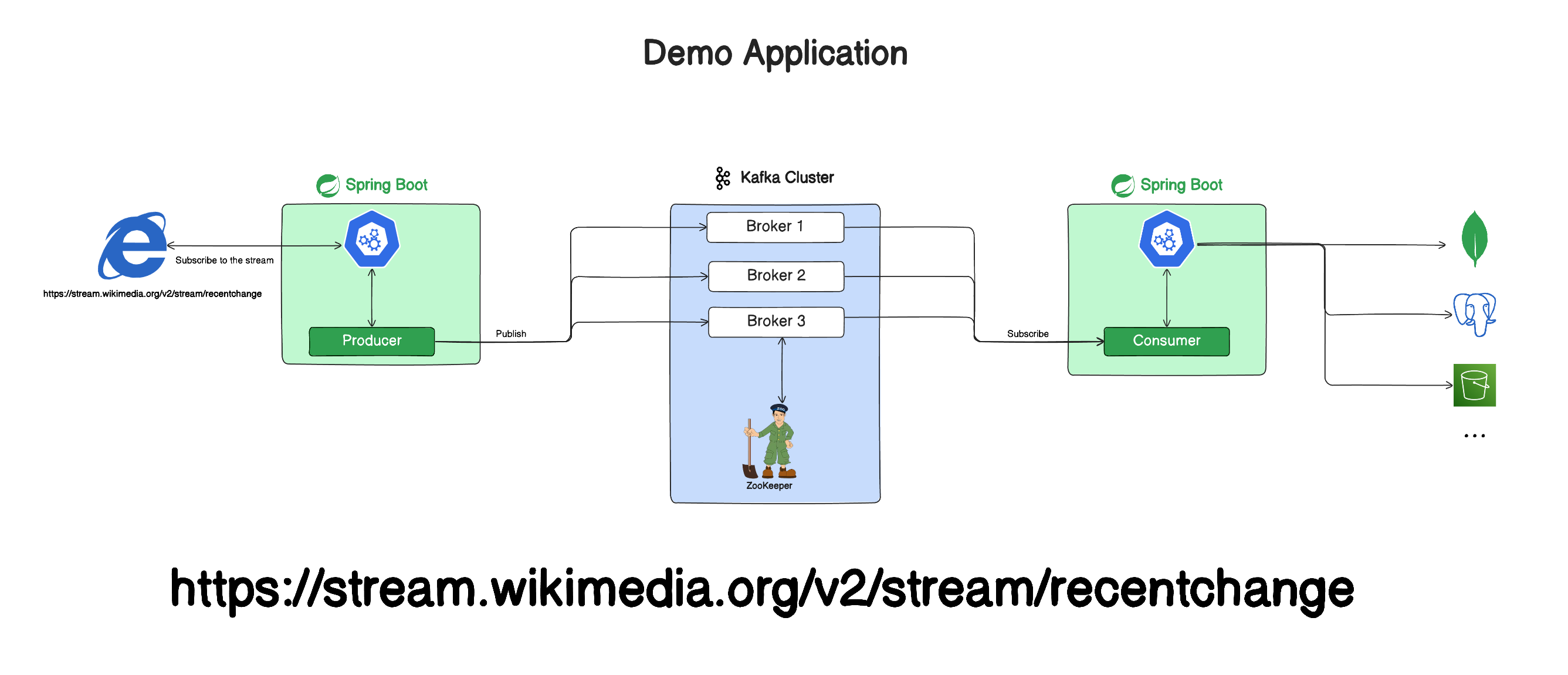This is a sample Spring Boot project that demonstrates the integration of Kafka with a Spring Reactive application. The project showcases key concepts related to Kafka, including topics, partitions, serialization, consumer groups, and offset management.
- Java 17 or later
- Apache Kafka (for running locally)
- Maven (or use the included
./mvnwscript)
Ensure that Kafka is installed and running locally. You can download Kafka from the official Apache Kafka website.
Start a ZooKeeper server (required by Kafka):
bin/zookeeper-server-start.sh config/zookeeper.propertiesStart a Kafka broker:
bin/kafka-server-start.sh config/server.propertiesClone this repository and navigate to the project folder:
git clone https://github.com/ali-bouali/apache-kafka-with-spring-boot-reactive
cd apache-kafka-with-spring-boot-reactiveApache Kafka is a distributed, fault-tolerant, and highly scalable message broker and stream processing platform. It was originally developed by LinkedIn and later open-sourced as an Apache Software Foundation project. Kafka is designed to handle large volumes of data streams in a real-time and fault-tolerant manner.
Key Components of Kafka: Producer: An application that publishes messages to Kafka topics.
- Consumer: An application that subscribes to topics and processes the published messages.
- Broker: Kafka brokers form the core of the Kafka cluster, storing and managing the streams of records.
- Topic: A category or feed name to which records are published. Topics in Kafka are used to categorize messages.
- Partition: Topics are divided into partitions, allowing Kafka to parallelize processing and scale horizontally.
- Zookeeper: Kafka relies on Apache ZooKeeper for distributed coordination and management of the Kafka cluster.
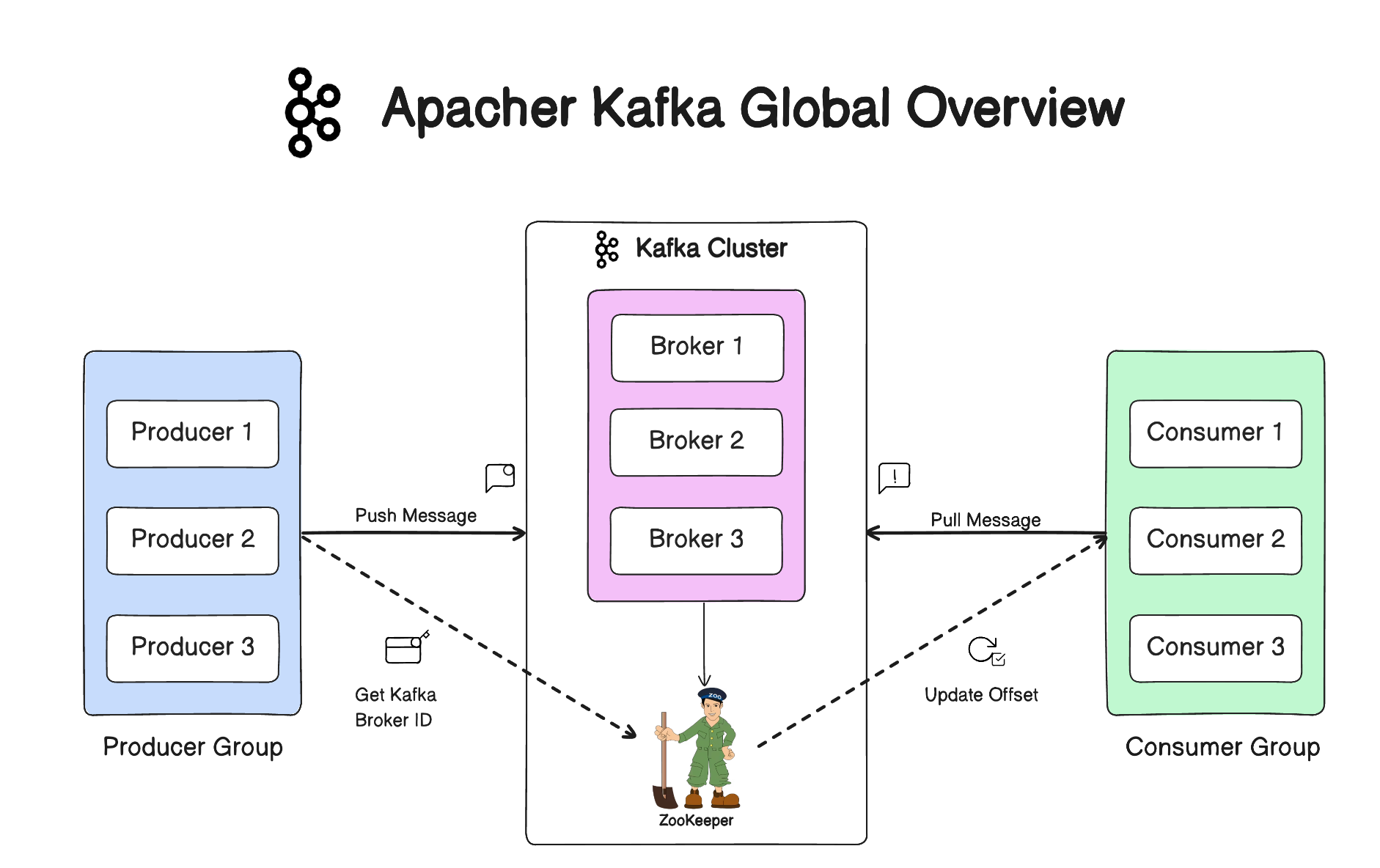
A Kafka cluster is a group of one or more Kafka brokers (servers) working together to manage the storage and exchange of data in the form of messages. Kafka is designed to operate as a distributed system, and a cluster allows it to scale horizontally, provide fault tolerance, and handle large volumes of data across multiple nodes.
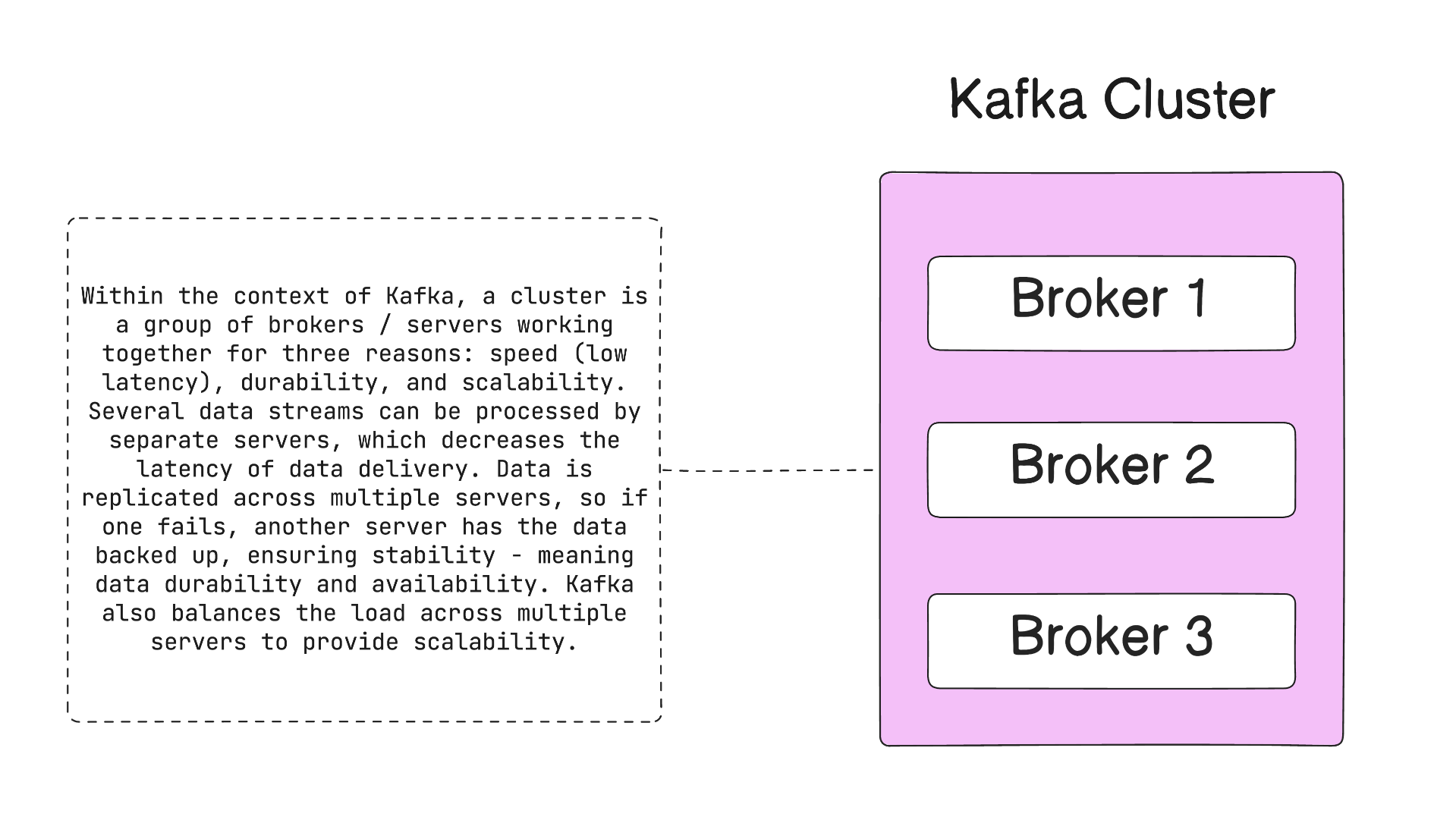
Kafka brokers form the core of the Kafka cluster, storing and managing the streams of records.
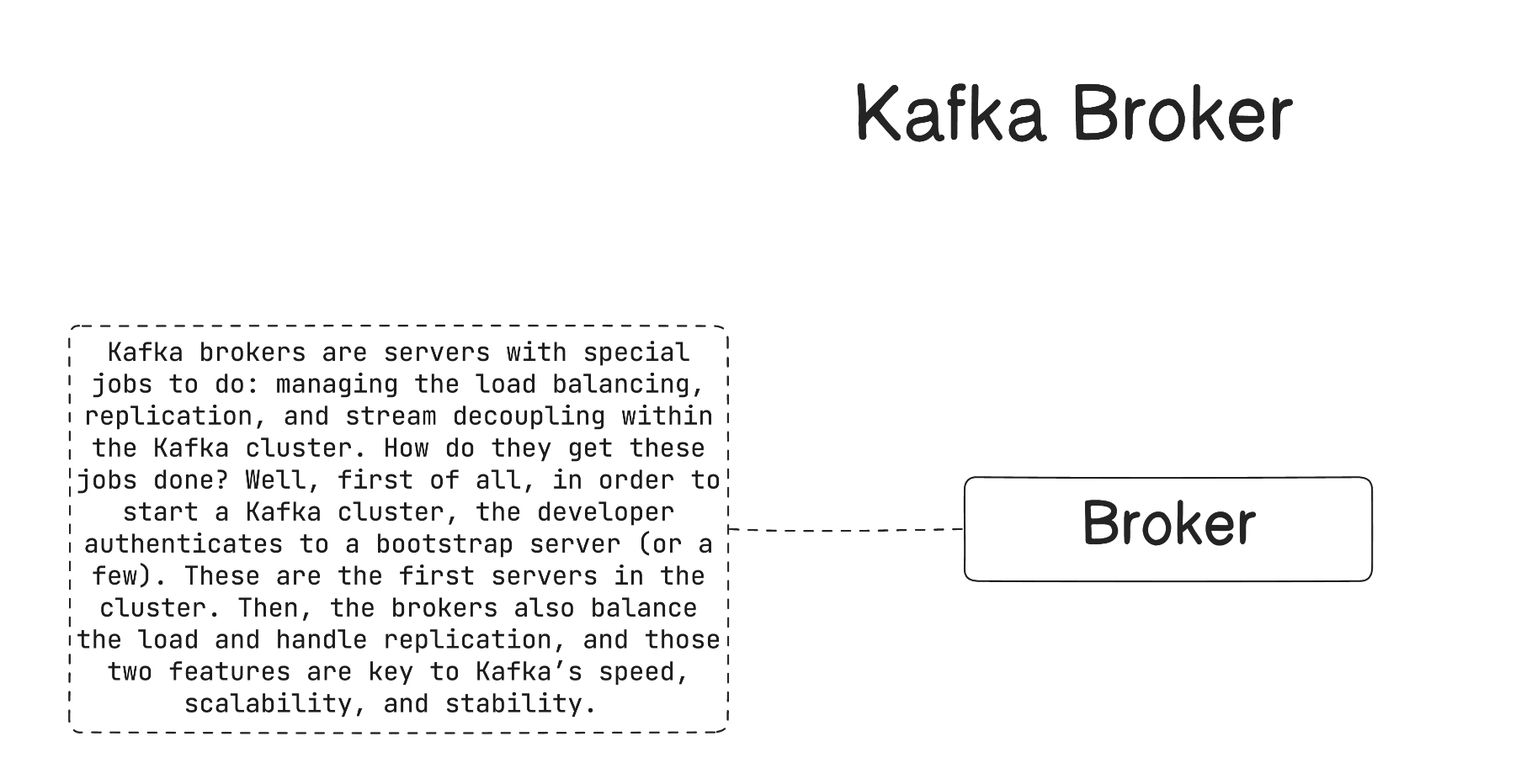
Producers are applications or systems that publish messages to Kafka topics. Producers determine which partition within a topic a message should be sent to.
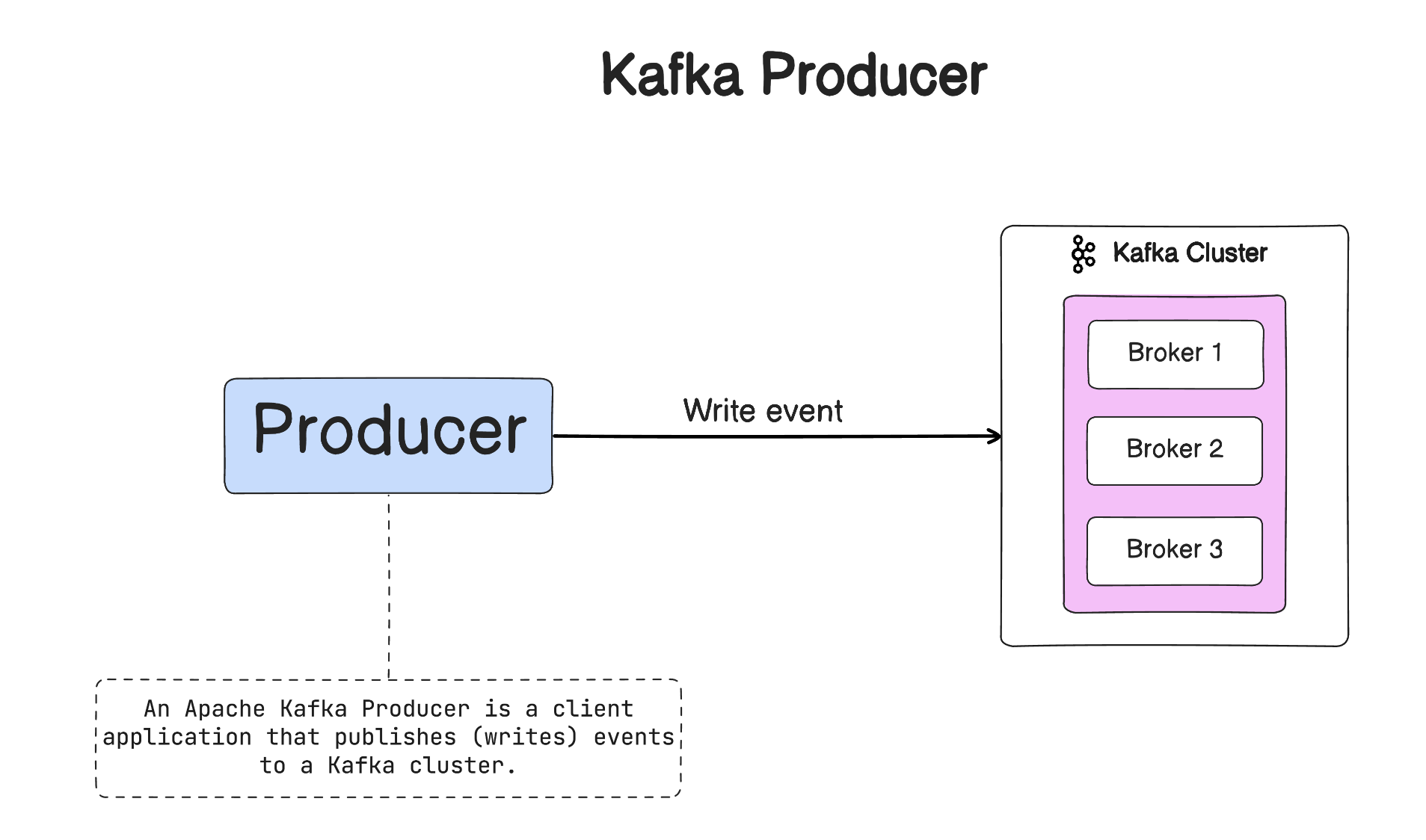
Consumers are applications or systems that subscribe to Kafka topics and process the messages. Consumers can be part of a consumer group, allowing them to parallelize the processing of messages.
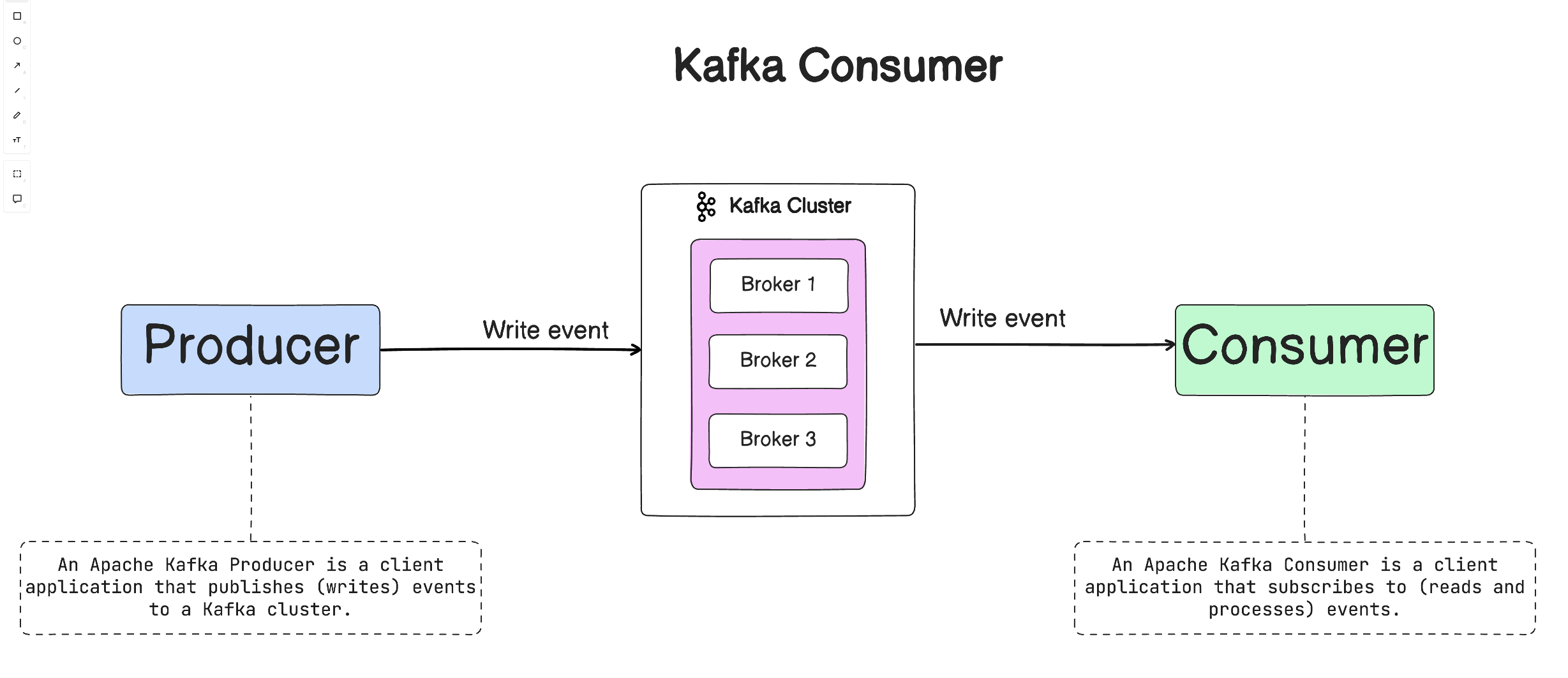
A Kafka topic is a category or feed name to which records (messages) are published. Topics help organize and categorize messages.
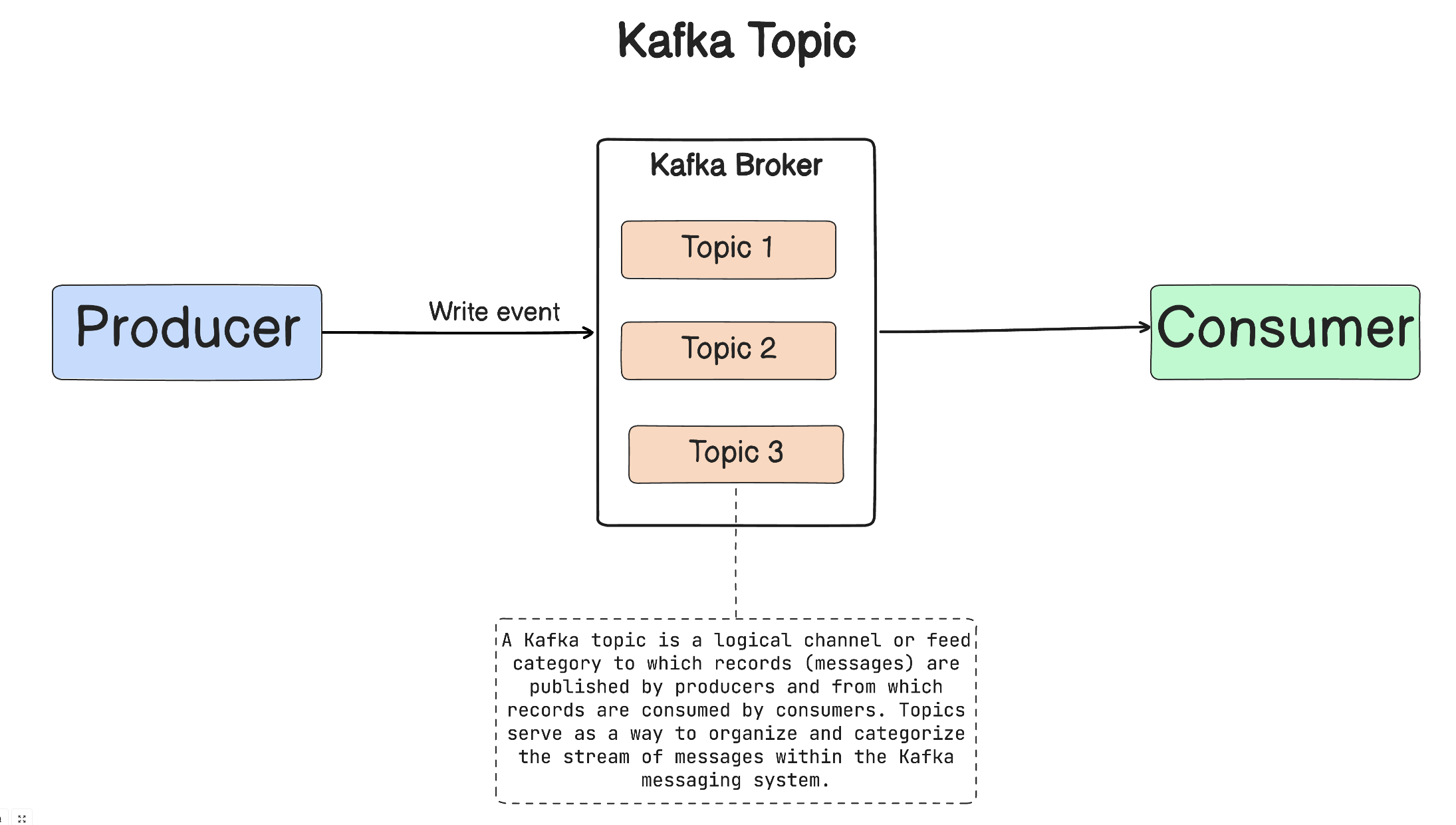
Topics are divided into partitions, allowing for parallel processing and scalability. Each partition is assigned to a specific broker.
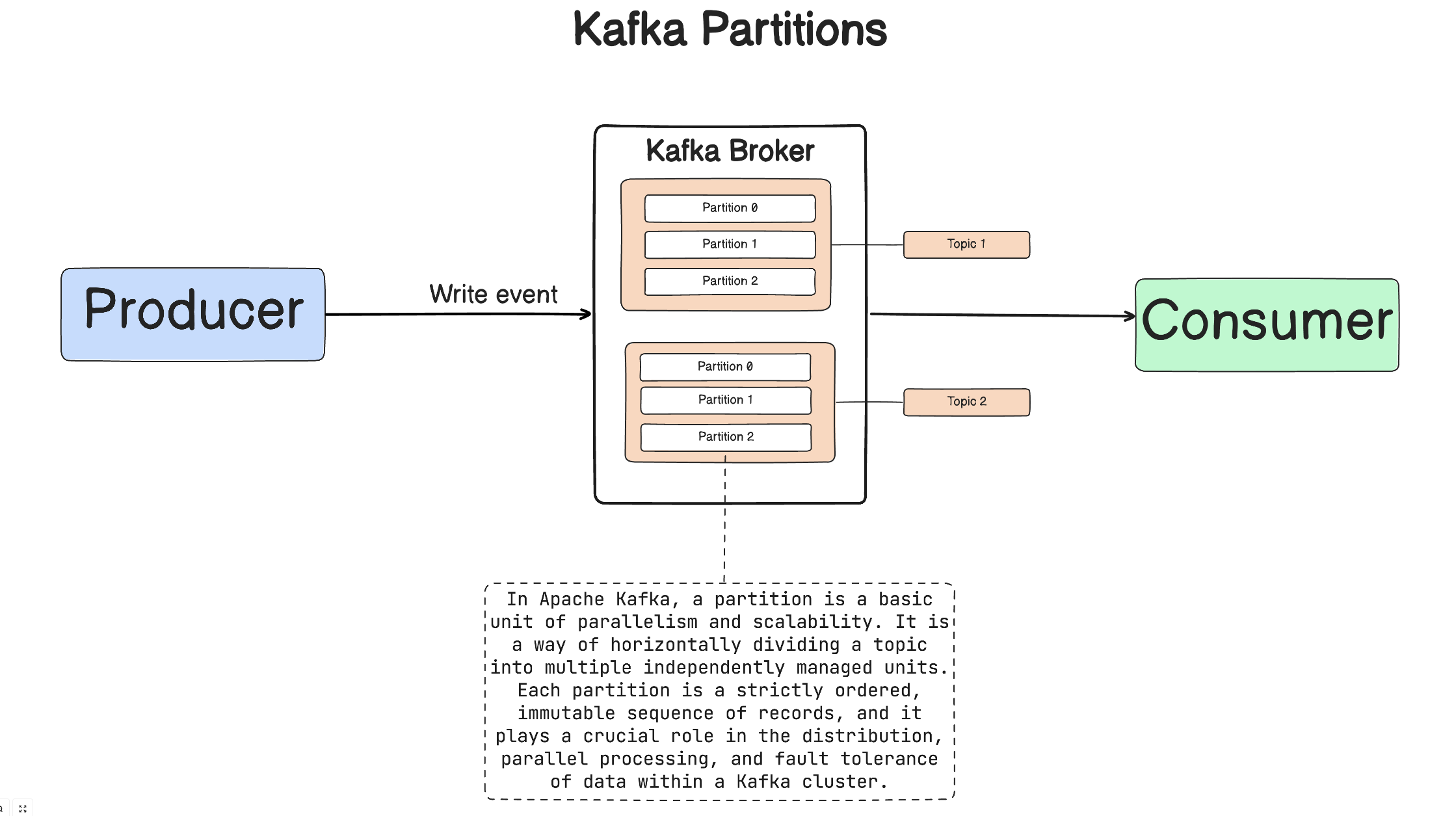
Offsets represent the position of a message within a partition. Consumers use offsets to track their progress and resume processing from the last committed offset.
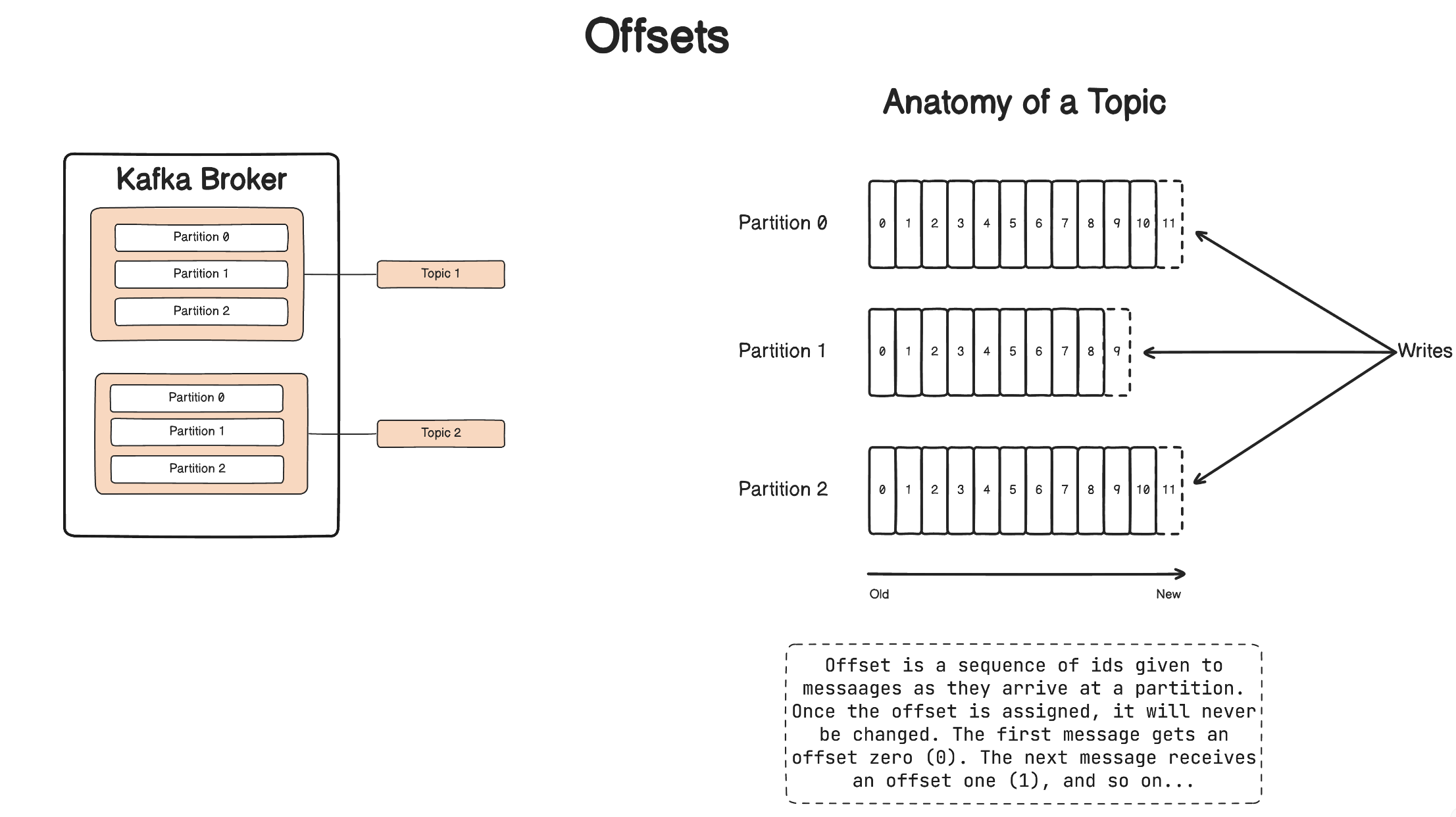
Consumer groups allow for parallel and scalable message processing. Consumers within a group coordinate to consume messages from one or more partitions.
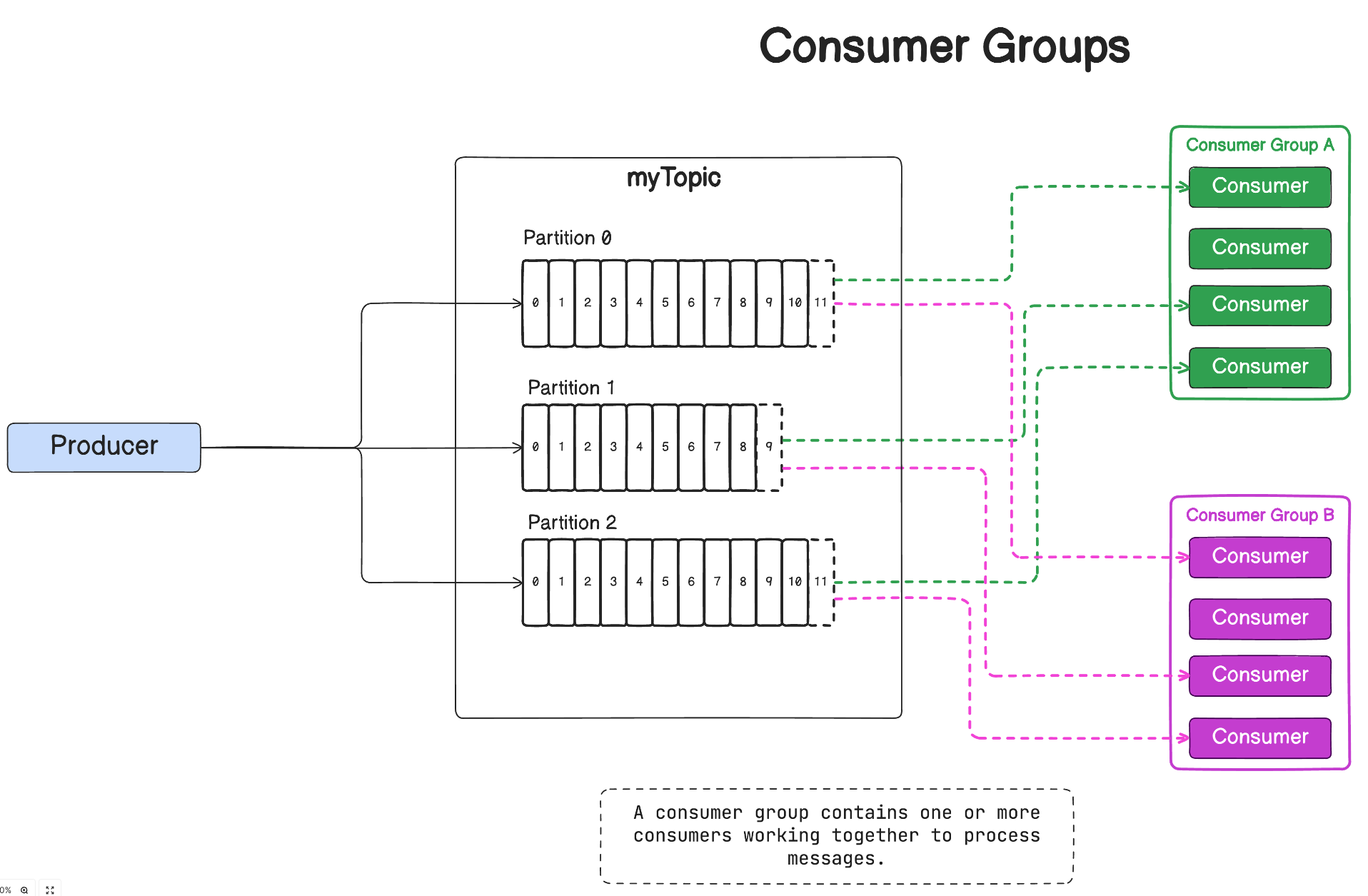
Serialization is the process of converting data to a format suitable for transmission. Kafka allows custom serializers for key and value objects.
To showcase the functionality of the application, I have developed two distinct projects:
-
Producer Project: The producer project leverages the Spring Boot Reactive framework to extract a data stream from Wikimedia Recent Changes. This project is designed to efficiently read the streaming data and subsequently transmit the messages to a Kafka broker.
-
Consumer Project: The consumer project complements the aforementioned producer by retrieving messages from the Kafka topic. The retrieved messages are then persisted into a DynamoDB database. This dual-project configuration not only demonstrates the integration of Spring Boot Reactive with Kafka for real-time data processing but also showcases the seamless storage of this data in a DynamoDB database, emphasizing end-to-end functionality within the application.
